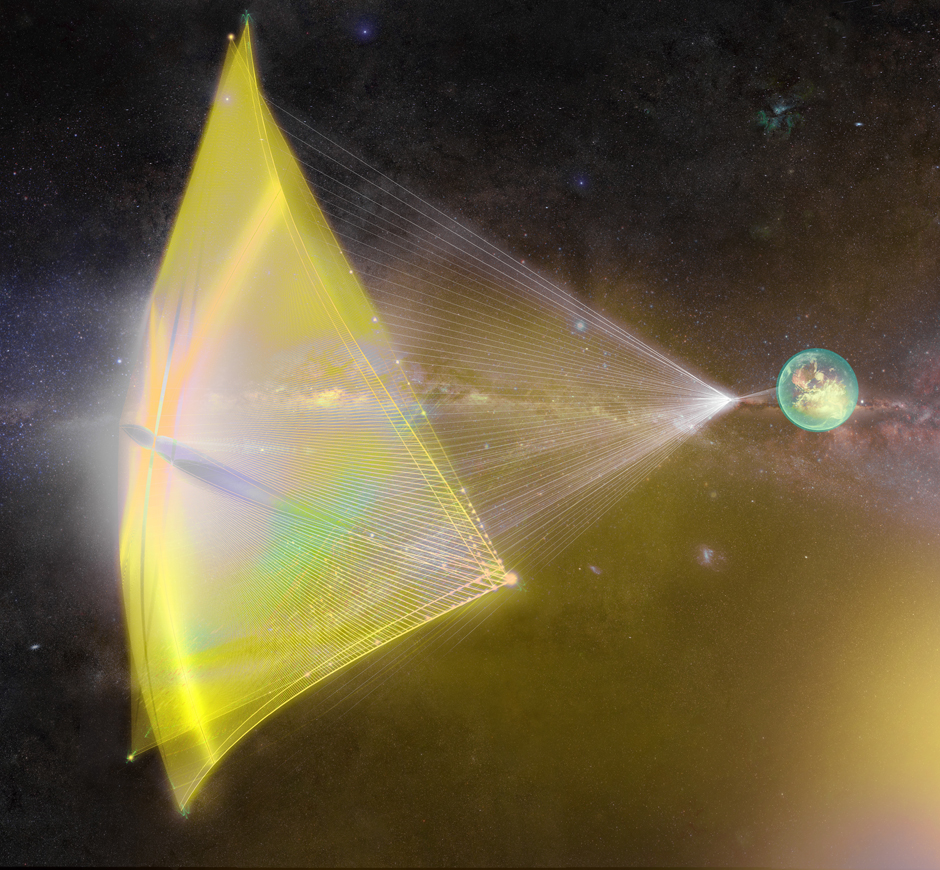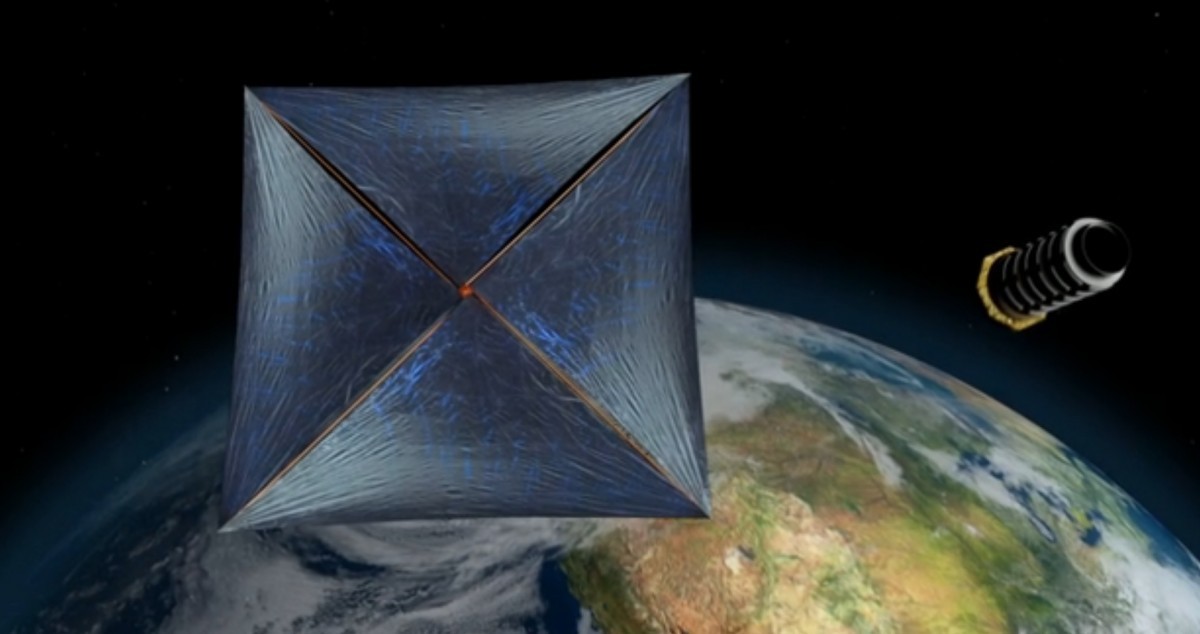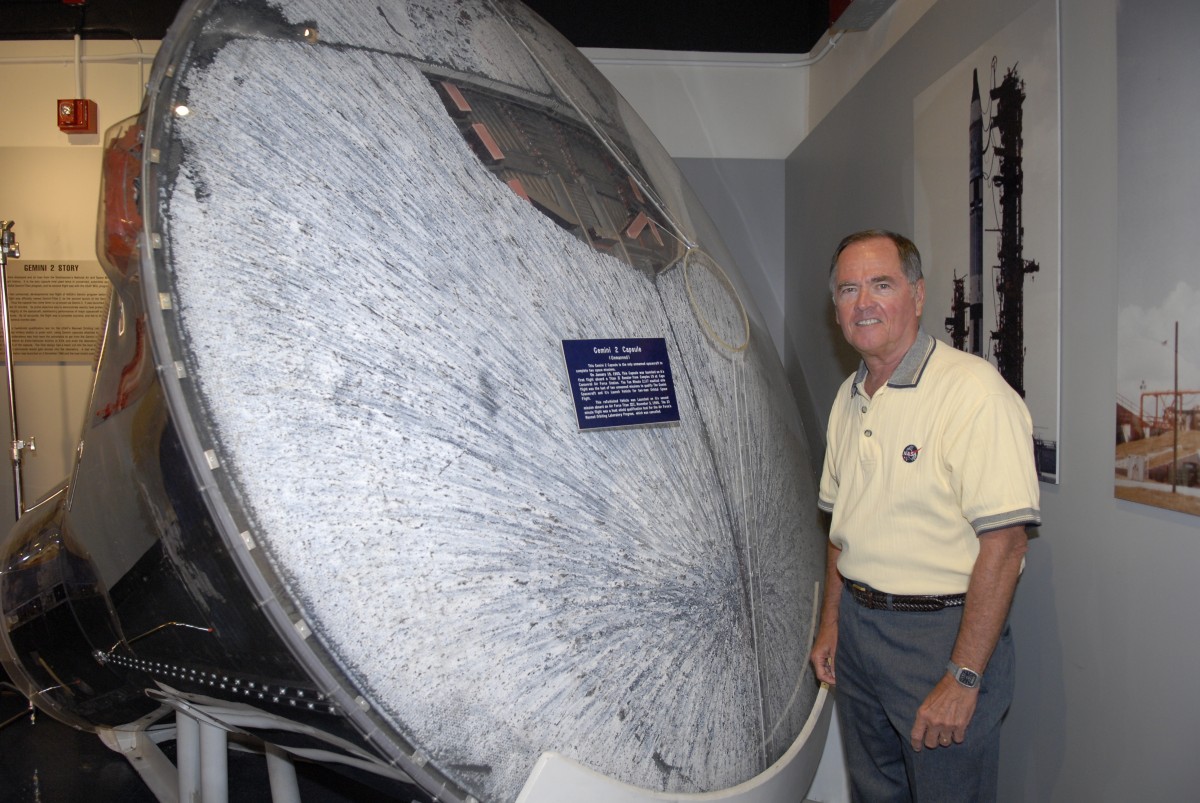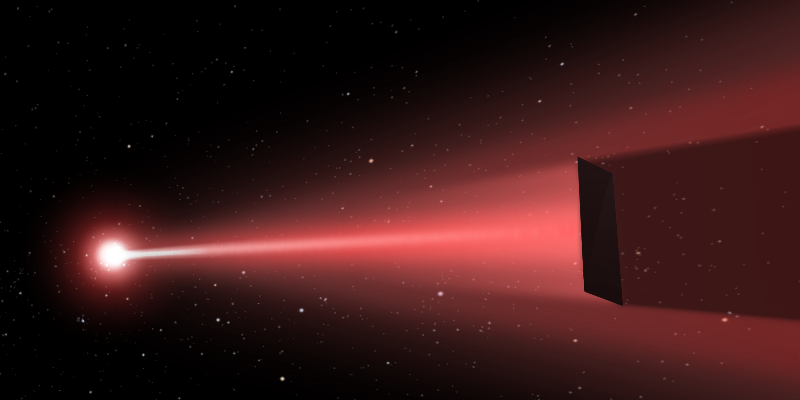Ask Ethan: Can the atmosphere slow down the spacecraft?

Last year, Yuri Milner and Stephen Hawking teamed up to create the Breakthrough Starshot project. Their plan is to use a huge array of lasers that will accelerate a very light laser sail. The sail, with a “ship on a chip” attached to it, will accelerate to a speed exceeding 20% of the speed of light and head for one of the nearest stars. With such a speed, he must arrive at his goal in one human life — an amazing achievement! And although an incredible number of economic and technical obstacles stand in the way of this project, Alex Stockton, hoping for success, asks a question about the arrival of the ship:
My father and I discussed the possibilities of the spacecraft offered by Milner and Hawking. The father believes that he will be able to slow down the atmosphere of the planet when he reaches his goal. I believe that it will not be possible to significantly slow it down, and all this will end in a powerful explosion. Who is right?
Indeed, the purpose of sending a spacecraft several light-years away to the nearest planetary system cannot be the simple transfer of space debris through the galaxy.

We would like to get to a system that is abundant in other worlds, with the opportunity to study them, get data, and bring them back to the people who still live on Earth. We have already received an incredible amount of information about alien solar systems thanks to our exoplanet research program, but — as the New Horizons, Dawn, and Cassini missions that worked in our Solar System showed — you cannot replace a close survey of the worlds.
')

If we can get there, it will be a feat. If we can aim and accelerate well enough with suitable accuracy and with the necessary values, our speed will be approximately 60,000 km / s relative to any planet or solar system to which we will arrive. Think about it: 60 000 km / s, 216 million km per hour. If this speed exceeds everything that you can imagine - the way it is. It exceeds the speed of any macroscopic object known to us, and this is hundreds of times greater than the speed necessary to run away from the gravitational pull of our galaxy. If on the way you fly into a small area with dispersed neutral gas, the heating will be incredible. Indeed, at speeds that are thousands of times smaller, only the most advanced of thermal shields can move into our atmosphere.

Astronaut Bob Kripen with a Gemini-B capsule, and her battered, but a whole thermal shield
But if you move a thousand times faster, the situation becomes a million times worse. If you opened the window in the car on the go, you might notice something interesting: if you drive twice as fast, the resistance force will be four times as much. The energy, friction and heating of a spacecraft are subject to the same problem; if you move at double speed, you warm up four times faster, and if you move with doubled speed, then you warm up a hundred times. To understand what the Starshot ship can experience in the atmosphere, let’s imagine the closest analogy for this: a meteor.

Most of the meteors crashing into the Earth during a meteoric rain are comparable in mass with our apparatus - from 0.1 to 10 grams. The amount of kinetic energy of a meteor is proportional to its mass and the square of its velocity relative to the atmosphere. These meteors fly quickly: from 20 to 110 km / s, and usually burn in the atmosphere in a split second. During heavy and beautiful meteor rain, you can see dozens or even hundreds of bursts in the sky overnight.

Now we come to the spacecraft: its mass is comparable to a meteor, but the speed is 1000 times greater. This means that its kinetic energy, which must be dissipated, will be 1,000,000 times greater than that of a typical meteor. A planet colliding with a spacecraft weighing 1 gram, moving at a speed of 60,000 km / s, will experience the same catastrophe as the collision of the planet with an asteroid weighing 1 ton, moving at 60 km / s: the equivalent of Earth occurs once every ten years.

1860 Meteor, artist Frederick Edwin Church
At such speeds, the matter of the spacecraft will turn into a plasma, when their electrons are cut off from the atoms / molecules. Such a thin and distributed ship, which they plan to build, will be disintegrated in microseconds - which is good, since it will only need 1,000 microseconds to overcome the thickness of the atmosphere, comparable to Earth's.

In an attempt to keep the spacecraft intact, it is best to rely on the same array of lasers present at the point of arrival, which can irradiate the ship with the light of the same frequency that it has accelerated. We do an excellent job with creating materials capable of reflecting about 99.999% of a certain frequency of light incident on them - thanks to this, the concept of such an apparatus has the right to life. But if you bump into anything other than light of such a frequency — into any other radiation, or matter — you will absorb a tremendous amount of energy. And at such speeds it will mean disintegration. So, with regret, I inform you and your father, Alex, that the resistance of the atmosphere will slow down your spacecraft, but will do it in the form of a fiery catastrophe that will destroy everything that is on the ship, down to individual atoms.
Source: https://habr.com/ru/post/402981/
All Articles